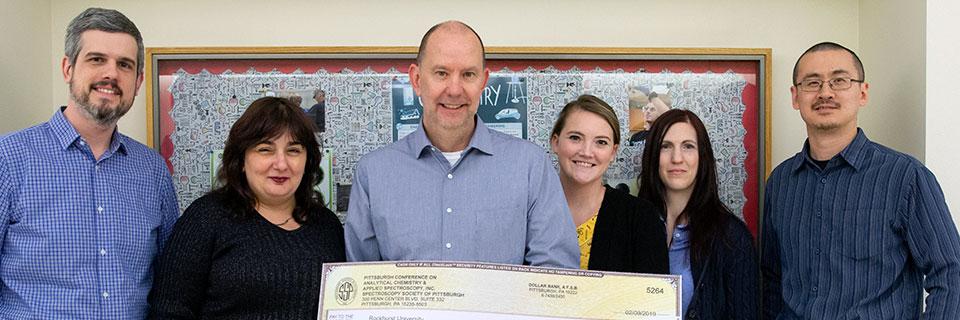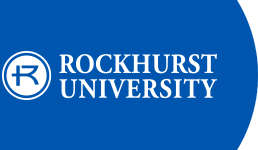What Has Chemistry So Excited? A Grant for a New Atomic Absorption Instrument, Of Course

If you’re a chemist looking to analyze the amount of sodium in drinking water, magnesium in windshield glass, or iron in breakfast cereal, you’ll likely reach for an atomic absorption instrument.
In fact, these are all examples of experiments performed by Rockhurst University chemistry students using the instrument, which breaks down the concentration of elements in common materials.
However, atomic absorption instruments are also expensive. Dale Harak, Ph.D., associate professor of chemistry, said the University’s current instrument is widely-used and well-loved. He’s kept it running, but the department has known for some time that the unit would need to be replaced. For several years, Harak said he applied for grants from the Pittsburgh Conference (Pittcon) Memorial National College Grants program to do just that, without success. Still, he said he applied again this year, hopefully but not necessarily expectational. Then another faculty member, Michael Marvin, Ph.D., assistant professor of chemistry, visited the Pittcon website for something else and found the University’s name listed as a $10,000 grant winner.
“We got the letter and the check a couple days later,” Harak said.
A big check was printed. Group photos taken. This was an occasion to celebrate, said Petia Bobadova, Ph.D., associate professor and chair of the chemistry department, not just because of the grant, but because of what having a new instrument will mean for current and future students. For chemistry majors at Rockhurst University, use of this particular piece of chemistry laboratory equipment begins fairly quickly after arriving on campus — in the general chemistry course — and continues through higher-level classes.
That’s unusual, Harak said.
“We are very intentional about giving students hands-on experiences with this equipment from pretty early on,” he said. “We think it’s a great opportunity to learn to use this tool that they’ll likely encounter in any professional chemistry lab.”
So Bobadova said it’s also a point of pride for the chemistry department that students get the opportunity to learn to use advanced equipment so quickly after beginning their education. Courses are designed to foster interest in the subject through experiments that give students a reason to explore the world around them or, in the case of the windshield glass analysis lab, solve a simulated mystery.
“This is a way to get students interested in chemistry, or to keep them interested in chemistry in a way they hadn’t been before,” she said.
Bobadova and Harak said a presidential mini-grant from the University will also help pay the cost of the atomic absorption instrument, and the new instrument should arrive in about a month.







